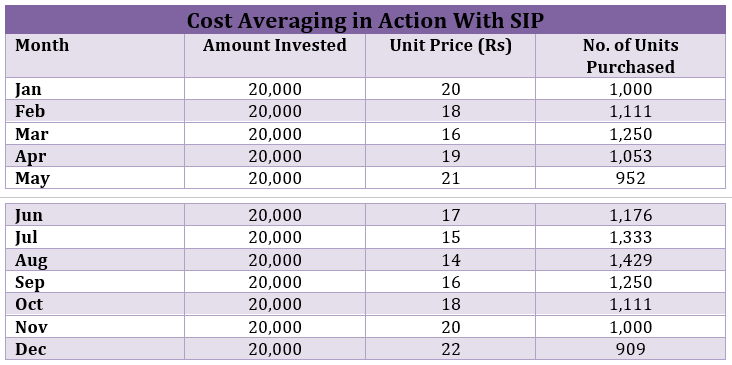India’s Resilience: Why Investors Should Stay the Course?
By Akhil Chugh
Date Aug 31, 2025
Global headlines around U.S. tariffs and trade tensions can feel unsettling for investors. Recently, President Trump’s move to impose higher tariffs (doubling to 50% in late August 2025) on India has sparked concerns about whether this could derail the country’s growth story.
For investors, this means there’s no reason to panic or pause your investment journey. With strong domestic demand, structural reforms, and steady investor confidence, India continues to demonstrate resilience even amid global turbulence. Let’s explore why India’s long-term story remains intact—and why SIP investors should stay confident.
1. GST 2.0: A Catalyst for Domestic Demand
Prime Minister Modi unveiled “GST 2.0” on August 15, 2025—calling it a Diwali gift for citizens. This reform aims to simplify the tax system with:
- A streamlined structure of just two primary GST slabs: 5% and 18%, with a 40% rate reserved for luxury or sin goods.
- Widespread benefits: Nearly 99% of goods in the 12% bracket move to 5%, and most 28%-rated items shift to 18%.
- Immediate economic boost: SBI Research estimates, combined with income tax cuts, this could inject ₹5.31 lakh crore (~1.6% of GDP) into consumer spending.
- Sector-level uplift: Analysts expect sharp demand revival in autos, FMCG, cement, pharma, and durables—boosting profitability and consumption.
Investor Takeaway: Lower tax rates mean more affordable goods and stronger business earnings—supporting equity mutual fund returns and helping SIPs thrive through enhanced domestic consumption.
2. India’s Economic Resilience: Consumption-Driven & Reform-Led
Despite the U.S. imposing steep 50% tariffs on Indian exports, India remains one of the fastest-growing economies. India clocked 6.5% GDP growth in FY2025, including a strong 7.4% in Q4.
- With domestic consumption making up ~60% of GDP, growth is less dependent on exports and more on domestic drivers.
- Inflation is currently at an eight-year low (~1.5%), supporting household spending and corporate margins.
- Rural demand, rising incomes, and strong urban consumption trends are keeping the economy buoyant.
- Analysts suggest GST reforms could offset tariff drag, cushioning the economy with a projected 0.6 percentage point growth uplift.
Investor Takeaway: With consumption accounting for ~60% of GDP, and multiple reform-led tailwinds, India’s domestic economy remains a reliable growth engine in the face of external shocks.
3. Diversifying Beyond the U.S.: Expanding Global Reach
India is actively reducing over-reliance on any single market by broadening its trade ties.
- FTA (Free Trade Agreements) with the UAE, Australia, and EFTA nations (Switzerland, Norway, Iceland, Liechtenstein) already finalized.
- Ongoing negotiations with UK, EU, and Canada.
- Exports shifting focus towards Middle East, Africa, and Southeast Asia, where demand is rising.
Investor Takeaway: Even if U.S. tariffs pinch one channel, India has multiple others open—making its economy more resilient and globally relevant.
4. SIPs: Navigating Volatility with Discipline
SIPs are one of the smartest ways to benefit from this economic stability.
- When tariffs cause short-term volatility, SIPs allow investors to buy more units at lower prices. Let’s understand it with below table:

As per the table illustrated above:
With Monthly SIP of ₹20,000 over a period of one year:
- Total Investment (12 months): ₹2,40,000
- Total Units Accumulated: ~13,575
- Average Cost per Unit (SIP): ₹17.68
If Lumpsum ₹2,40,000 invested in Jan (NAV ₹20): 12,000 units only
- Extra Units via SIP: ~1,575
This clearly shows how SIP helps you accumulate more units in volatile markets, lowering your average cost and boosting long-term wealth creation.
Thus, in the long run, SIPs can act as a shock absorber for your investment portfolio.
2. Over time, compounding does the heavy lifting—magnifying recovery gains and helping portfolios grow faster.
3. In volatile times, SIP discipline safeguards against emotional, ill-timed moves.
This way, while GST reforms fuel strong domestic consumption, SIPs help investors systematically benefit from the eventual market rebound.
Conclusion:
Global noise is temporary—but India’s consumption-fueled growth, strong ratings, and bold GST reforms are structural and enduring. So, even if tariffs create external turbulence, India’s internal demand engine remains strong, ensuring that long-term growth stays on track.
Stay disciplined, continue your SIPs, and let India’s growth power your portfolio.
Got doubts about your SIP strategy? Let’s talk—together we’ll make sure your portfolio stays steady in storms and grows in sunshine.
Download our mutual fund app & start investing for your long-term financial goals.
Stay positive. Stay Invested!



